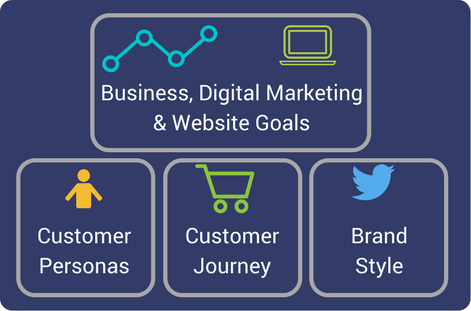Creating an effective digital marketing strategy that aligns with business objectives is crucial for any organization looking to succeed in the digital age. Here, we’ll explore the steps necessary to develop and implement a robust digital marketing plan that supports and enhances your business goals. This comprehensive approach will not only aim to increase visibility and engagement but also drive growth and create sustainable competitive advantages.
Understanding Business Objectives
Before diving into the specifics of a digital marketing strategy, it’s essential to clearly understand your business objectives. These objectives can range from increasing revenue, expanding the customer base, enhancing brand awareness, entering new markets, or improving customer engagement. Aligning your digital marketing strategy with these goals is crucial for ensuring that every effort contributes directly to your business’s success.
1. Set Clear, Measurable Goals
The first step is to translate broad business objectives into specific, measurable, achievable, relevant, and time-bound (SMART) goals. For example, if the objective is to increase revenue, a corresponding SMART goal could be to increase online sales by 20% within the next 12 months.
2. Understand Your Audience
A deep understanding of your target audience is critical. This includes demographic data, psychographics (like interests and attitudes), and behavioral insights. This knowledge allows you to tailor your digital marketing strategies effectively to meet the needs and preferences of your audience.
Crafting a Digital Marketing Strategy
With a clear set of objectives and a thorough understanding of your target audience, the next step is to craft a digital marketing strategy that employs the right mix of activities and channels to achieve these goals.
1. Choose the Right Channels
Depending on your audience and objectives, different channels might be more effective. Common digital marketing channels include:
- SEO (Search Engine Optimization): Enhancing your website’s ranking in search engine results pages for relevant keywords.
- Content Marketing: Creating and distributing valuable, relevant, and consistent content to attract and engage a clearly defined audience.
- Social Media Marketing: Using platforms like Facebook, Twitter, LinkedIn, and Instagram to build relationships and interact with consumers.
- Email Marketing: Sending personalized, targeted messages to a group of subscribers to nurture leads and promote loyalty.
- PPC (Pay-Per-Click) Advertising: Acquiring traffic by purchasing ads on search engines and other websites.
- Affiliate Marketing: Partnering with individuals or companies to promote your products in exchange for a commission.
2. Utilize Technology and Tools
Leverage technology to optimize your marketing efforts. This includes using data analytics to monitor performance and customer relationship management (CRM) systems to enhance customer interactions. Automation tools can also be employed to streamline operations and improve efficiency.
3. Content Is Key
Develop a content strategy that addresses the needs and interests of your audience while promoting your brand and products. The content should be engaging, informative, and designed to drive conversions. It should be optimized for each stage of the customer journey, from awareness to decision-making.
Integrating and Implementing the Strategy
Integration of various digital marketing efforts ensures that they complement each other and work towards the common goal of achieving business objectives.
1. Align Teams and Departments
Ensure that all departments and teams within the organization understand the digital marketing strategy and how it relates to their specific roles. This alignment enhances collaboration and efficiency.
2. Execute with Precision
With a strategy in place, execution involves careful planning and management. Each campaign should be monitored to ensure it is performing as expected and adjustments should be made as necessary. This phase requires meticulous attention to detail and an agile approach to marketing management.
3. Measure and Optimize
No digital marketing strategy is complete without a robust framework for measurement and optimization. Use analytics to measure the success of each campaign and the overall strategy. Key performance indicators (KPIs) should be established based on the initial business objectives and monitored regularly. Optimization involves tweaking and refining strategies based on these analytics to improve results continuously.
Continual Learning and Adaptation
The digital landscape is perpetually evolving, and staying informed about new technologies, changing consumer behaviors, and industry trends is crucial. Continuous learning and adaptation ensure that the digital marketing strategy remains effective and relevant.
1. Stay Informed
Regularly educate yourself and your team on the latest in digital marketing. Attend seminars, subscribe to industry publications, and participate in relevant online communities.
2. Innovate and Experiment
Innovation is key to staying competitive in digital marketing. Don’t be afraid to experiment with new tactics or technologies. A/B testing, for instance, can be a great way to find out what works best for your audience without fully committing resources.
3. Solicit Feedback
Getting feedback directly from your customers can provide insights that no amount of data analytics can. Use surveys, user testing, and engagement metrics to understand how your audience perceives your brand and offerings.
Conclusion
Developing a digital marketing strategy that aligns with business objectives is a dynamic and ongoing process. It requires a clear understanding of goals, an intimate knowledge of your audience, and the ability to adapt strategies based on performance and market conditions. By focusing on these elements, businesses can create a digital marketing strategy that not only meets but exceeds their expected outcomes, driving growth and establishing a robust online presence.

